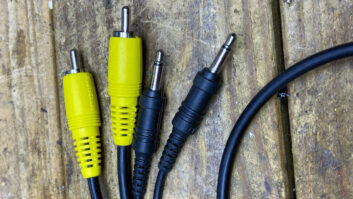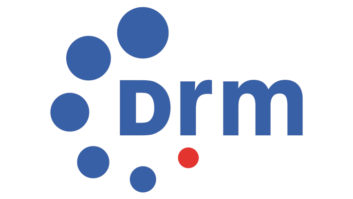With continuing concern over relatively slow IBOC receiver sales, it’s important to understand a relatively new element in consumer equipment deployment.
It involves the process by which devices are developed and sold, and how this process differs between broadcast receivers and other new consumer hardware classes today.
The key distinction centers on the vertical vs. horizontal business models that both exist, and how this dichotomy affects the landscape in which these types of services currently try to compete with each other.
Think of it this way: Radio (and over-the-air TV) is received “the old fashioned way” — on receivers you can buy anywhere, over a broad spectrum of price points, including a wide range of features (or included on devices that combine the receiver with other functions, from clocks to cars), limited only by the offerings of hardware manufacturers. Let’s call these “horizontal” receivers.
On the other hand, a growing number of competitive devices, like satellite radios and multifunction cellular phones, have their design, features and pricing strictly dictated by the service provider with which the device is purpose-built to receive.
Even though these devices may be made by some of the same manufacturers that make the old-school receivers, their development process differs markedly. So we’ll call these “vertical” receivers.
(Some might say that this distinction might be better served by calling these “open” and “closed” receivers, respectively, but these terms carry some additional baggage that muddies the specific architectural discussion here.)
The deployment to consumers of these two types of devices also follows divergent paths.
Horizontal receivers are sold by any store that wants to do so, and consumers simply buy them, turn them on and tune in a channel.
Vertical receivers generally are distributed on a more controlled or otherwise limited basis, and they require a subscription to be established with the service that the devices are designed to receive. (Some limited functionality may be provided as a baseline by the device without a service account, such as 911 calling from an unsubscribed cell phone.)
Often the service sign-up is done concurrently at the point of sale, but in some cases it can be done independently by the consumer in a separate step. Once the subscription is initialized, the receiver must be authenticated and associated with the subscriber’s account, and then it can be used to tune in and enjoy the services offered.
Also unlike horizontal receivers, the vertical device typically is of an addressable variety, meaning that each unit has a unique identity.
This is primarily to allow “deauthorization” of an individual device if a subscription expires, but it can be used for other personalized service delivery, as well.
This makes them inherently more expensive than horizontal devices, but these and other cost differentials often are absorbed by the service provider through subsidies — to device developers and to consumers — that are part of the cost of doing business in the vertical device environment.
Golden rule
We’re all pretty familiar with the horizontal receiver, but the vertical receiver is a relatively new animal — and one that is confusing, if not antithetical, to broadcasters.
Why is this seemingly counterintuitive strategy becoming so popular? Who would want to have to pay directly for development, deployment and promotional costs for receiver hardware, on top of the costs for creating/providing service?
The answer may lie deep within the DNA of broadcasters and telcos.
Although these sectors share much genetic material in common, there is one place in which they substantially differ: Broadcasters have always lived by the “if you build it, they will come” premise, in that if you begin to offer adequately compelling service, consumers will find their own way to receive it.
Another view of this approach is the chicken-and-egg argument, in which one party has to start the process with speculative investment, hoping that a second party eventually will reward the first’s proactive step by matching the buy-in.
Telcos typically avoid such “faith-based initiatives,” preferring to invest in new services that have a much more defined response rate. In other words, when a telco fires up a new cellular tower, for example, it can start collecting revenue based on the new service directly, on day one.
(Some of the device subsidies mentioned above that are offered to consumers often are accompanied by long-term contract agreements, so further revenue assurances are gained by service providers in the process.)
The horizontal service model has a longer and less direct incubation process before net-positive revenue appears. While the ultimate profitability of this approach may eventually be greater, it is a riskier proposition.
In the old days, this risk was fairly slight, given that scarce spectrum meant competition among licensed broadcasters was relatively low and well defined.
But in today’s multi-platform world of greatly increased competitiveness and uncertainty, returns on the speculative investment model are less assured. Thus the traditional telco approach, with a vertical (i.e., end-to-end, or “managed”) transmission/reception model are of increased value within a rich service-provider world.
Perhaps the greatest advantage to the service provider of the vertical model arises from the unilateral ability it provides to determine what services will be available on the device.
In a corollary of the new Golden Rule (“He who has the gold makes the rules”), if the service provider is footing the bill for the device development, deployment and promotion, that provider can also dictate which services will be receivable on the device, and perhaps more important, which services will not be.
The latter proviso may allow the service provider to require the purveyors of certain content or services to “pay to play,” meaning that these third parties will have to work out a deal with the service provider in order to get their wares aboard a particular device or platform.
This could particularly affect broadcasters if they wish to have AM/FM receivers (analog or IBOC digital) included on multifunction devices like satellite radios or wireless phones and PDAs.
Changing times
The conventional wisdom for broadcasters has long favored the horizontal market, where no cost or promotional burden for deployment of receivers is borne by service providers.
We are now moving to an era in which this notion may become outdated. Competitive services are pushing hard to deploy dedicated, standalone receivers for their services, and/or have their receiver chips embedded in new converged devices, in hopes that such short-term, front-end loading of costs will reap long-term revenue benefits.
So the new spin on the old premise tells us that in terms of new service-deployment success, you get what you pay for. In other words, if broadcasters continue to rely on zero investment in receiver deployment (i.e., remaining with a pure horizontal strategy), they may end up with a dwindling base of new users.
It’s a new world, and one in which the old rules may no longer apply.







